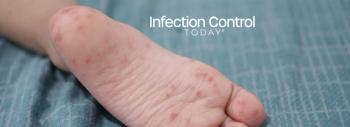
Bacterial Pathogens Delay Their Entry Into Cells
Pathogens make themselves feel at home in the human body, invading cells and living off the plentiful amenities they offer. However, researchers at the Max Planck Institute for Infection Biology in Berlin, together with colleagues at Harvard University, reveal an opposite strategy used to ensure infection success. Pathogens can actually delay their entry into cells to ensure their survival. Upon cell contact, bacteria trigger a local strengthening of the cellular skeleton with the aid of signalling molecules, allowing them to remain outside the cell. The researchers also show that this strategy, unknown until now, is used by certain intestinal pathogens as well.
Infection with the sexually transmitted bacterium Neisseria gonorrhoeae can lead to an inflammation of the urogenital tract, the uterus and ovaries. By means of thread-shaped proteins on its surface called pili, the bacterium attaches itself to the cell membrane. Once attached, the bacteria undergo rapid changes of their surface structure to avoid recognition by the hosts immune system. Only during the later stages of infection will the pathogens penetrate cells and occasionally advance into deeper tissues to find further breeding ground.
Until now scientists were firmly focused on understanding the tricks used by these pathogens to enter cells. The results of the Berlin-based researchers suggest, however, that bacteria may spend as much effort in resisting cell entry. Host cells tend to generate tiny vesicles by which they transport bacteria inadvertently into the interior. The researchers have now shed some light on the signals which prevent the bacteria from being swallowed. Upon fastening themselves to the cell surface, the bacteria induce a sequence of events that results in the strengthening of the cell skeleton directly beneath the point of attachment. The structural protein Actin is transported to attachment sites, where it forms a strong, supportive chain. In tandem, another structural protein Caveolin-1 and the signalling proteins VAV2 and RhoA are recruited to the cell membrane where they play a central role in effectively maintaining N. gonorrhoeae in the extracellular milieu.
These results have opened up new perspectives in understanding the course of infections: "For a long time it was thought that most pathogens strive to enter cells quickly. However, the opposite may be the case. It seems the bacteria prolong their extracellular existence in order to survive," says Thomas F. Meyer of the Max Planck Institute of Infection Biology. By anchoring to the cell via pili proteins and assembling an underlying support skeleton, the pathogen is buffered against the often inhospitable conditions of the extracellular environment.
By extrapolating their findings to the intestinal bacteria Escherichia coli, the scientists have indicated that the strategy of delaying entry into cells to ensure survival may be widespread among pathogens, possibly even the bacterial agents of meningitis and pneumonia. These newly discovered signalling pathways may therefore have exciting implications for the prevention of infection.
Reference: Jan Peter Boettcher, Marieluise Kirchner, Yuri Churin, Alexis Kaushansky, Malvika Pompaiah, Hans Thorn, Volker Brinkmann, Gavin MacBeath, Thomas F. Meyer. Tyrosine-phosphorylated caveolin-1 blocks bacterial uptake by inducing Vav2-RhoA-mediated cytoskeletal rearrangements. PLoS Biology, Aug. 24, 2010.
Newsletter
Stay prepared and protected with Infection Control Today's newsletter, delivering essential updates, best practices, and expert insights for infection preventionists.





